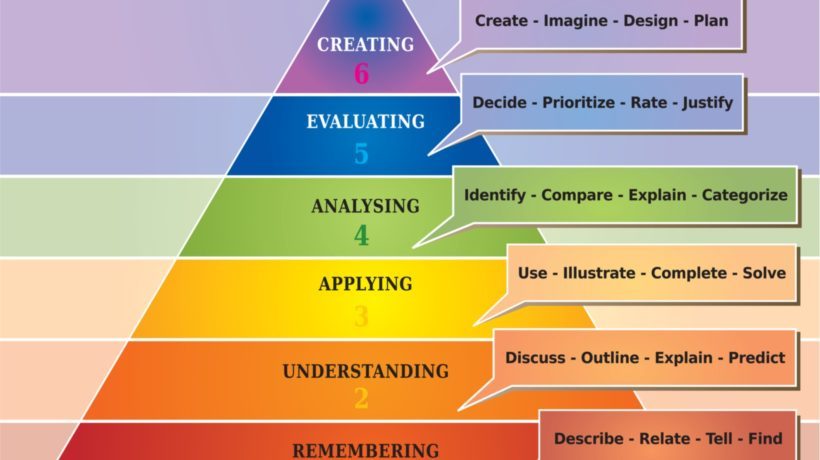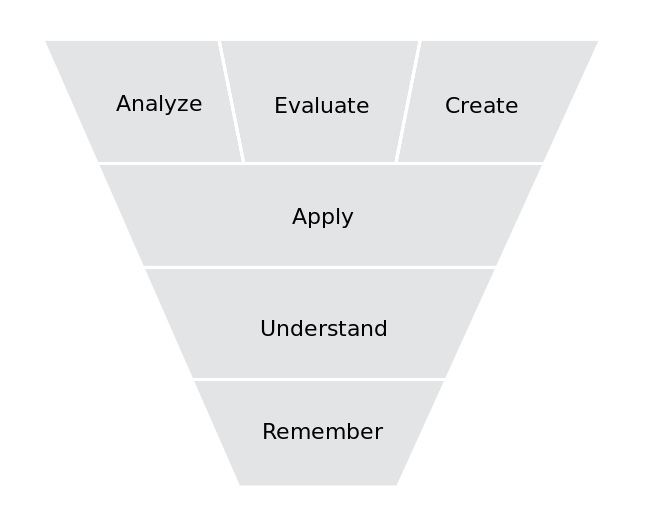Why I Don’t Like Bloom’s Taxonomy Verbs
Before we start discussing why I'm not crazy about Bloom’s Taxonomy verbs, I have a confession to make.
I’ve sat in scores of meetings with project stakeholders, painfully agonizing over the verbs to use for defining the objectives of a course. Should we use “Develop” or “Construct”? Which one is better – “Describe” or “Explain”? Would it be more appropriate to say “Classify” or “Categorize”? You get the idea. After all, objectives define the boundaries of a course, and we don’t want to get them wrong, right?
Yes, but…
It is absolutely important to define clear objectives. For designers, they set the boundaries of a learning intervention and decide on its level of sophistication. While for learners, they help (when presented well) set expectations at the beginning of a course. The catch lies in the phrase “when presented well”.
Benjamin Bloom and his colleagues provided the verbs as a helpful means to decide on the action to describe while defining objectives. However, we sometimes often fall prey to the notion that a verb has to absolutely be defined within the confines of the taxonomy level the course represents, failing which can mislead learners.
For example, take the verb "Describe". It appears on many levels of the taxonomy – Knowledge, Comprehension, and Evaluation. So, by just looking at the verb, you cannot understand at which level of the taxonomy the course belongs.
I agree that the taxonomy is complex. So while on one hand there is a group of learning designers who insist on following the listed verbs to the T, there is another group who shuns the taxonomy altogether. This second group prefers to follow two things, not necessarily connected with each other:
- That the taxonomy can, and should, be broadly classified into two levels – knowledge and performance.
- That all learning interventions, irrespective of type and level, should address performance, and not just knowledge.
I agree with both the points above. No arguments there.
However. There is a middle path, which when tread well, can help us deliver courses at the right level and make it challenging and engaging for learners, without getting bogged down by the defined verbs.
The 6 levels of taxonomy in the cognitive domain are useful for deciding the level at which a course needs to be designed. There are times when the fine distinctions between the levels are a useful measure on which to base a learning intervention. Let’s look at these (please note that I’m using the revised taxonomy here, while also providing a reference to the original one):
There are times when the fine distinctions between the levels are a useful measure on which to base a learning intervention. Let’s look at these (please note that I’m using the revised taxonomy here, while also providing a reference to the original one):
1. Remembering (Original Taxonomy Level: Knowledge)
Typically, no information should be presented at this level alone. It simply signifies rote learning with no understanding of the information being ingested.
An example of this would be when a person is getting started on the path to becoming a leader, they read quotes on leadership, and are able to repeat them.
2. Understanding (Original Taxonomy Level: Comprehension)
A few things can be taught at this level. Examples include:
- Procedural information, such as the steps of a process which takes place in another department. The learner is not directly connected with the process, but it is something very useful for the learner to understand.
- Conceptual information, such as how solar technology works. Again, the learner is not directly connected with applying the information in their day-to-day work, for example, someone in the marketing department of a company that produces solar energy, who is not directly involved with the production, but should be better informed about the company’s business.
The leader-in-the-making has moved one step higher, and she is now able to explain the meaning of the quotes in her own words. Most eLearning falls in this category; we are all too familiar with “By the end of this course, you would have understood…”.
3. Applying (Original Taxonomy Level: Application)
This level is typically at the center of most eLearning design, and for good reason. We want people to be apply their knowledge and skills to their jobs, and thereby showing measurable improvements in performance. This level, in a way, can also be considered to be the Holy Grail of eLearning, because if a person is able to do their job better as a result of what they learned in the course, then the course can be said to have achieved its goal. But the verbs to be used, that would depend less on the taxonomy and more on the job skills we are trying to impart.
An example of this would be a course that teaches solar technology to engineering students. Here, learners get to apply their understanding of the concepts to build a solar panel or some other equipment.
Back to the leader-in-the-making. She has taken a course on leadership, and she practices by applying the models she learnt in the course in her day-to-day work.
4. Analyzing (Original Taxonomy Level: Analysis)
This goes beyond the application of knowledge in a specific albeit wide set of contexts, and involves breaking down information into parts, or examining it and trying to understand its structure.
Here, the engineering students deconstruct the solar technology that they have learned, and examine its possibilities, applications and limitations.
The new leader is now able to analyze the models she has learnt, deconstruct them, and see the component parts of the whole.
At this point, we get into the realm of Higher Order Thinking, and it is difficult for a standalone eLearning course to transfer skills at this level and above, with the learner bearing more and more responsibility for their own development.
5. Evaluating (Original Taxonomy Level: Evaluation)
At this stage, people are able to validate information or ideas based on a set of criteria. They can present and defend opinions, using evidence as a solid basis for the same.
The leader is in a position to compare and contrast different models, evaluate and make a sound judgement on which ones are better, and for what reasons.
6. Creating (Original Taxonomy Level: Synthesis)
This is the ultimate level of cognition, where people are able to build new structures or patterns on their own based on existing information.
The leader is now an expert in her field, and she can create new models based on her experience and expertise.
While the levels build upon one another, they are not necessarily linear. In fact, many theorists believe that while the first three levels are in sequence, the last three levels exist parallel to one another, like this: And, a course can be taught at several levels at the same time.
And, a course can be taught at several levels at the same time.
So, while designing courses, make sure to aim for the highest level on the taxonomy ladder that you can possibly go, without getting mired in the actual Bloom's Taxonomy verbs to use, and you will have a learning experience that is engaging and interesting.









